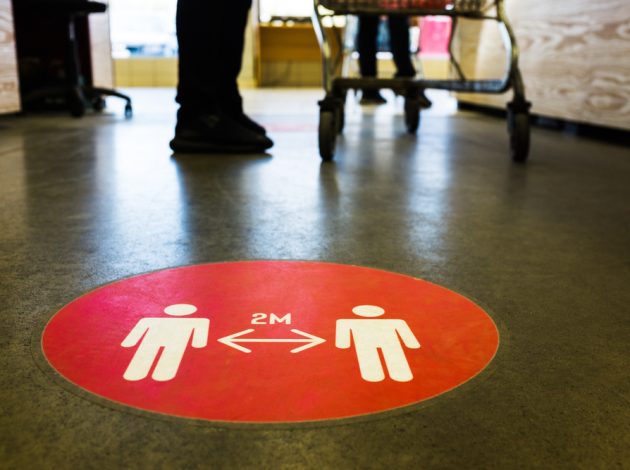Delivering insight on the COVID-19 pandemic: How the ONS has informed the response so far

The mission of the ONS is to ensure public understanding and decision-making is informed by timely and high-quality analysis and statistics. During the course of the COVID-19 pandemic, the ONS has responded to the need for rapid information that has been used by decision-makers. As we approach another bank holiday weekend, Deputy National Statistician Iain Bell reflects on how the ONS has informed the response to the pandemic so far.
Over recent weeks we have continued to show that with timely, well-positioned analysis the ONS has an important role to play at the heart of decision making. We know from the daily briefings that the Government is listening to our evidence, and the unprecedented levels of traffic to our website show just how far-reaching our work has been across all of society.
Here’s an overview of some of what our analysis has shown so far, with a focus on our latest releases:
The social impacts of COVID-19
This week we made some changes to our weekly survey, with today’s results now relating to last weekend (14-17 May). These are the first findings since the UK Government’s revised guidance on lockdown in England and also some changes in Scotland and Wales. It shows just under 39% of adults had visited a park or public green space in the past seven days. Of these 17% said they had met up with friends or family from outside their household.
As we mark Mental Health Awareness Week, we recognise that this pandemic is having an impact on all of us. Anxiety levels remain high with 46% of women saying their well-being was affected compared to 40% of men. Among these, 69% of women and 52% of men said they felt stressed or anxious.
The theme of this year’s Mental Health Week is kindness. Amidst understandable anxiety, it was heartening to read last week that 61% of adults believe that people in Britain will be kind after the pandemic compared to only 42% thinking we were kind before. More people also think we’ll be united as a nation after recovery, with 49% believing this compared with 22% before the outbreak. Despite this positive news, only 22% think we will be living together in an equal society after the pandemic.
We have already shown the different impacts on disabled people (with more details in an earlier blog here). All our analysis suggests that the lockdown is affecting us all differently and we are working towards publishing the results on the impact for Black and Minority Ethnic Groups in the coming weeks.
Prevalence of COVID-19 Infection rates
Central to the pandemic response in further stages will be understanding its prevalence and the rate of infection. Last week, we published the first results of our new COVID-19 infection survey.
Results from the pilot phase of this survey are being released every week, providing the country our best estimates of how many people are currently infected.
We estimate that of those not in hospitals, care homes or other institutional settings there are around 137,000 people currently living with COVID-19 in England, equating to about 0.25% of the population. This shows the prevalence of COVID-19 is stable compared to the previous estimate.
Our data also suggest that there have been 61,000 new COVID-19 infections per week in England, or about 0.11 new cases per 100 people since we started collecting data on 26 April. No evidence has been found of a difference in the infection rate between men and women, or between different age groups.
This survey went from concept to the field and then publication of first results in just three weeks – normally an operation of this size would very much longer. We have many people to thank for this, including Professor Sarah Walker and her team at the University of Oxford, and analysts from Public Health England and the University of Manchester, for bringing together in days a project that would normally take around six months to organise.
Deaths related to COVID-19
On Tuesday we published our regular weekly analysis which showed there had been 37,375 deaths involving COVID-19 registered in England and Wales by 8 May and outlined the impact that VE Day may well have had on these numbers with fewer registrations on that day. We cautioned these were lower than we would have expected and that is likely to be reflected in next week’s numbers.
We are all relieved to see the number of deaths involving COVID-19 decreasing in most age groups but we have seen deaths from dementia and Alzheimer’s rise significantly.
Our analysis so far has shown the differing impacts by geography, deprivation levels, ethnicity, age and setting. But we know there is still much analysis required to fully understand the impact the pandemic is having on communities. We remind ourselves constantly that behind each of these raw numbers is a family and community grieving.
Next week we will publish significant analysis of deaths above the five-year average which stood at around 50,000 in England and Wales in the last seven registration weeks. This will tell us a significant amount about the impact the virus is having.
The picture across the UK
During the pandemic, the demand for information has been for both local level analysis – which is why we analysed deaths by locality and deprivation – as well as UK-wide information.
Knowing the UK-wide picture is important so we have now included a UK total for deaths in our regular weekly release. We have also published a new dedicated page for statistics on UK deaths involving COVID-19, and infection rates by country. We have worked across the nations and the Government Statistical Service to ensure people can understand all the different ways data is collected and the sources are easy to find.
Future analysis
Next week we are publishing the results of our time-use survey about how life under lockdown – in a one-month period – compares with time use in previous years, while we’ll also be analysing the impact of COVID-19 on people in different countries and regions of Great Britain.
We are still working through the workplan published in April and will update on further priorities to fill evidence gaps next week.

Iain Bell is Deputy National Statistician at the ONS